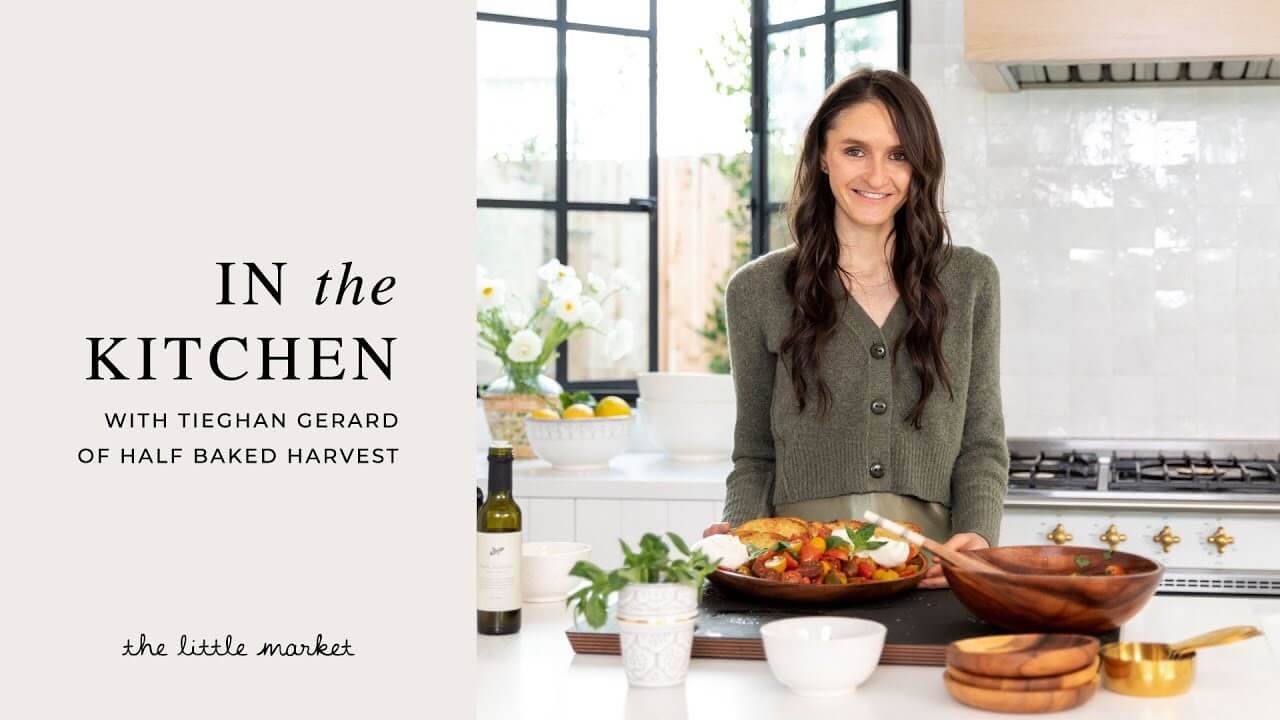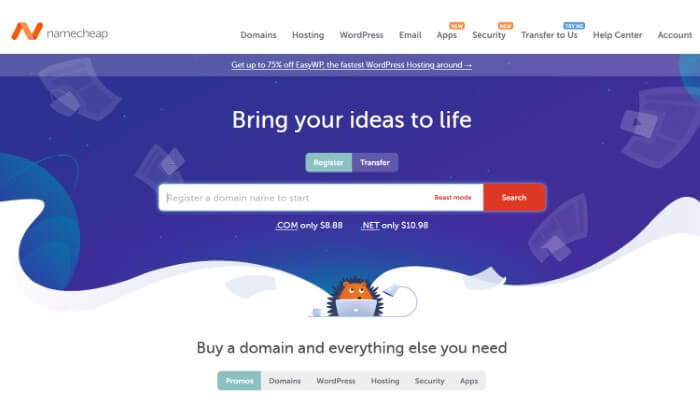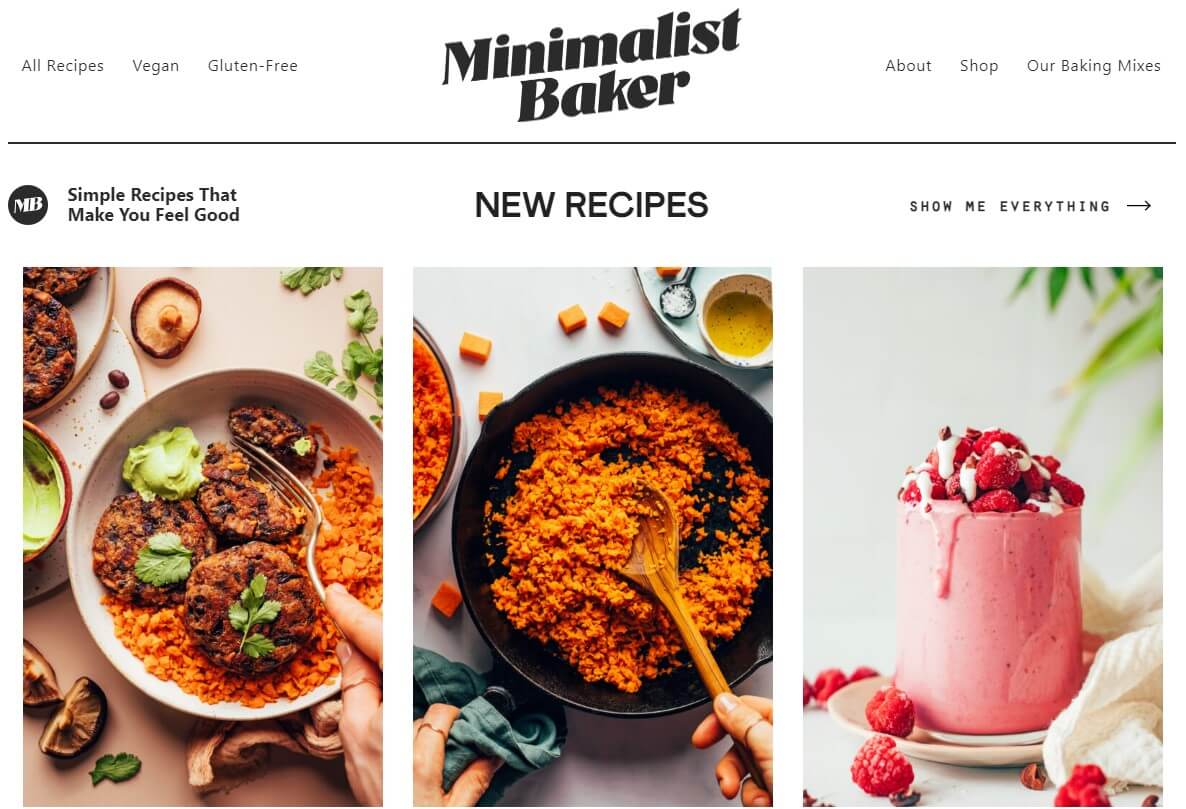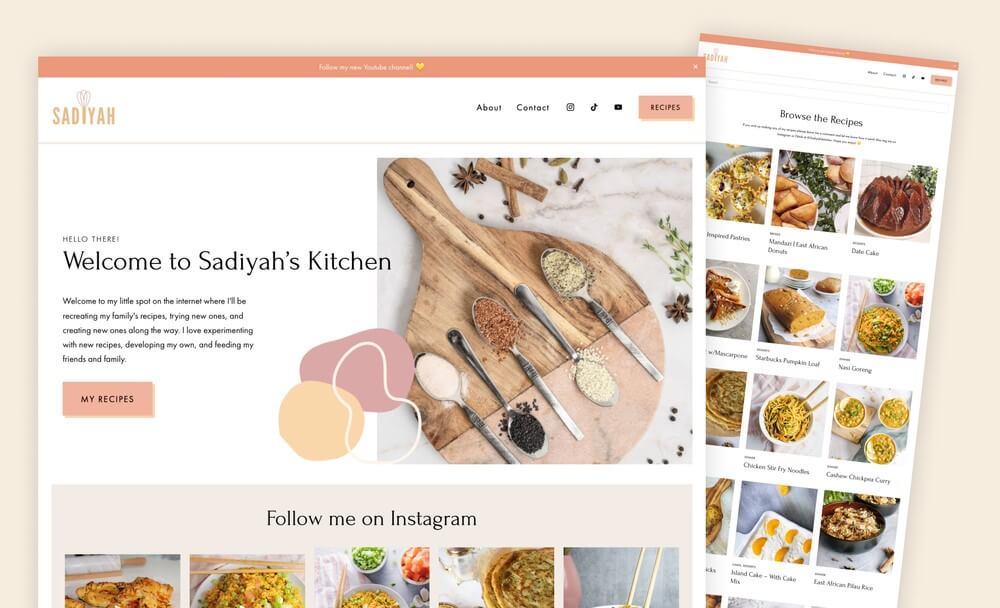How to Start a Food Blog: The Ultimate Guide
Category: Web Design

8 mins read
Do you love spending hours in the kitchen, experimenting with new recipes, and sharing your culinary creations with friends and family? If so, starting a food blog might be the perfect way to share your passion for food with a wider audience and turn your hobby into a thriving online business. In this comprehensive guide, we'll walk you through the essential steps to start a food blog that captivates and engages your audience, from identifying your niche to creating high-quality content and monetizing your blog. Grab your apron, sharpen your knives, and get ready to launch your very own food blog empire!
In this article:
Part 1. What Sets Your Food Blog Apart
In the world of food blogging, identifying your niche is crucial. Your niche is the specific focus or theme of your blog, and it can help you differentiate yourself from other food bloggers and attract a loyal following of readers who share your interests.
To find your niche, consider your expertise and think about your passions. You should also identify gaps in the market that you can fill with your blog. By doing so, you can create a food blog that stands out and resonates with readers.
One great example of a successful food blogger who has found her niche is Tieghan Gerard, the creator behind Half Baked Harvest. She focuses on creating easy, approachable, and delicious recipes inspired by her family's farm and the changing seasons. Her niche is centered around home-cooked meals that are both flavorful and visually stunning, and she has attracted a large and loyal following of readers who appreciate her unique approach to food blogging.

With a focus on her expertise and passion for seasonal, farm-fresh ingredients, Tieghan has created a brand and voice that sets her apart from other food bloggers. This has allowed her to collaborate with brands and publishers to reach an even wider audience.
Discovering your niche will enable you to create a food blog that stands out and appeals to your target audience. Next, we'll explore the practical steps you need to take to launch your food blog.
Part 2. Setting Up Your Food Blog
After identifying your niche, it's time to start creating your food blog. Although the idea of creating a blog can be daunting, it's easier than ever to create a professional-looking blog with little to no technical knowledge. When choosing a theme, ensure that it's mobile-responsive, as a significant portion of your audience will likely access your blog from their smartphones or tablets. Here are the key steps to creating your blog:
Choose a Blogging Platform
There are many blogging platforms available, but WordPress is by far the most popular and widely used platform for food blogging. It's user-friendly, customizable, and has a huge community of developers and designers who create plugins and themes to enhance its functionality.
Select a Domain Name
Your domain name is essentially the address of your blog on the internet. It's important to choose a domain name that reflects your niche and is easy for readers to remember. A memorable domain name can help your blog stand out in a crowded online space and make it easier for readers to return to your site. Additionally, a domain name that's related to your niche can help establish your blog's brand and communicate its focus to potential readers. You can secure a domain name by using domain registration services such as Namecheap or GoDaddy.

Set Up Hosting and Install WordPress
Once you have your domain name, you'll need to choose a hosting provider to store your blog's files and make it accessible to visitors. When selecting a hosting provider, consider their load times, uptime, and customer support.
Fast load times and reliable uptime are important for keeping visitors engaged and building a loyal readership. Good customer support can help you quickly resolve technical issues and keep your blog running smoothly. Popular hosting providers that meet these criteria include Bluehost, SiteGround, and DreamHost. Many hosting providers also offer one-click WordPress installations, making it easy to get started with your blog.
Choose a Theme and Customize Your Blog
Your blog's theme determines its overall look and feel, including its layout, color scheme, and typography. WordPress offers thousands of free and paid themes to choose from, or you can hire a designer to create a custom theme for your blog. Once you've selected a theme, you can customize it to fit your brand and make it unique.
Tailoring your blog's theme will help you establish a unique brand identity and make your blog more memorable to readers. By following these steps, you can create a professional-looking food blog that will serve as the foundation for your content and help you attract readers. In the following section, we'll dive into the process of creating captivating content that will not only engage your readers but also entice them to revisit your blog.
Part 3. What Makes a Mouthwatering Food Blog
The heart and soul of any successful food blog is captivating content. Your content should be informative, engaging, and visually appealing to attract and retain readers. Ensure your content appeals to readers with various skill levels, from beginners to experienced cooks, by offering a range of difficulty levels and techniques in your recipes and tips. Here are the key steps to creating great content for your food blog:
Develop Your Content Strategy
Your content strategy should outline the types of content you'll create, how often you'll post, and what topics you'll cover. It should also take into account your niche and target audience. Some popular types of content for food blogs include recipes, cooking tips, product reviews, and restaurant reviews.

Write Engaging Blog Posts
Your blog posts should be well-written, informative, and engaging. Use attention-grabbing headlines, clear and concise writing, and plenty of visuals to keep your readers interested. You can also include videos, GIFs, and infographics to add visual interest to your posts.
Create Quality Food Photography and Video Content
High-quality food photography and video content are essential for any successful food blog. Invest in a good camera and learn the basics of food photography, including lighting, composition, and editing. You can also create videos that showcase your recipes and cooking tips.
Optimize Your Blog for SEO
Search engine optimization (SEO) is the practice of optimizing your blog to rank higher in search engine results pages. Some tips for optimizing your food blog for SEO include using keywords in your blog posts and metadata, optimizing your images, and using internal linking to connect related content.
Following these steps will help you create compelling content that keeps your readers engaged and coming back for more. In the next section, we'll look at strategies for building an audience for your food blog.
Part 4. How to Attract a Loyal Following: Growing Your Food Blog's Readership
With great content on your food blog, it's time to start building an audience. Building an audience takes time and effort, but it's essential for the success of your food blog. Be consistent with your posting schedule and engagement with your audience to build trust and a sense of community. Here are some tips for building an audience:
Promote Your Blog on Social Media
Social media is a powerful tool for promoting your food blog and connecting with readers. Identify the social media platforms where your target audience is most active, and create a presence there. Share your blog posts, engage with your followers, and create shareable content. Some popular social media platforms for food bloggers include Instagram, Pinterest, Facebook, and Twitter.
Network with Other Bloggers and Food Influencers
Networking with other bloggers and influencers in the food industry can help you reach a wider audience and gain credibility. Collaborate with other bloggers on guest posts or recipe swaps, attend food conferences or events, and join blogger groups to make connections and learn from your peers.
Utilize Email Marketing
Building an email list is a valuable way to keep your readers engaged and informed about new content on your blog. Offer a freebie, such as an e-book or exclusive recipes, as an incentive for readers to sign up for your mailing list. Regularly send out newsletters with updates, new content, and promotions to keep subscribers engaged and coming back to your blog.
Engage with Your Audience
Respond to comments on your blog and social media platforms, and encourage readers to share their experiences and feedback. By engaging with your audience, you can build a sense of community and foster loyalty among your readers.
By consistently promoting your blog, networking, and engaging with your audience, you can build a loyal following of readers who are excited to see your latest content. With an established audience in place, it's time to explore ways to monetize your food blog.

Part 5. Making Money with Your Food Blog
Once you've built an audience for your food blog, you can begin monetizing your passion for food. Several income-generating strategies for food blogs include ads, affiliate marketing, sponsored content, and product sales. Here's a quick rundown of each.
Advertising
Display ads on your blog can generate revenue based on impressions or clicks. Google AdSense is a popular advertising platform for bloggers, as it automatically displays relevant ads on your site and pays you for ad views or clicks.
Affiliate Marketing
Joining affiliate programs allows you to earn a commission on sales made through your unique referral links. Amazon Associates and ShareASale are popular affiliate networks for food bloggers, offering commissions on kitchen tools, cookbooks, and other related products.
Sponsored Content
Partnering with brands to create sponsored content can be a lucrative way to monetize your food blog. Brands may pay you to create blog posts or social media content featuring their products or services. Be transparent with your readers about sponsored content, and only work with brands that align with your niche and values.
Selling Products
Create and sell your own products, such as e-books, online courses, or branded merchandise, to generate additional income from your food blog. This can be a great way to monetize your expertise and further establish your brand.
By monetizing your blog, you can turn your passion for food into a profitable online business. Remember that building and growing a successful food blog takes time, dedication, and persistence, but the rewards can be well worth the effort.
Part 6. 7 Tips for Successful Food Blogging
To wrap up this comprehensive guide, let's explore some additional best practices that can contribute to the success of your food blog. Implementing these strategies will help you further engage your audience, enhance your online presence, and grow your food blog empire:
- Consistency is Key: Maintain a consistent posting schedule to keep your audience engaged and establish trust. By regularly posting fresh content, your readers will know when to expect new material and will be more likely to revisit your blog.
- Quality Over Quantity: Focus on producing high-quality content rather than simply publishing a large volume of posts. Well-researched, engaging, and visually appealing content will attract more readers and encourage them to share your blog with others.
- Be Authentic: Share your unique perspective and voice with your readers. Authenticity helps build trust and loyalty among your audience and sets you apart from other bloggers in your niche.
- Stay Active on Social Media: Regularly share your content on social media platforms and engage with your followers. This will help you build a strong online presence and attract new readers to your blog.
- Always Be Learning: Stay up-to-date with the latest food trends, techniques, and industry news. Continuously improving your knowledge and skills will enhance the value of your content and establish you as an authority in your niche.
- Analyze and Optimize: Monitor your blog's performance using analytics tools like Google Analytics, and use this data to optimize your content, marketing strategies, and user experience. Regularly assessing your blog's performance will help you identify areas for improvement and growth.
- Connect with Your Readers: Respond to comments, emails, and messages from your readers to build a sense of community and foster loyalty. Encouraging reader interaction and creating a supportive environment will make your blog more appealing to new and returning visitors.
If you adhere to these proven strategies for effective food blogging, you will be well-prepared to establish a flourishing online presence and transform your enthusiasm for food into a rewarding and prosperous career. As you progress in your food blogging journey, remember to keep these suggestions in mind and remain committed, concentrated, and zealous about your craft.
Conclusion
Launching and growing your food blog empire may seem like a daunting task, but by following the steps outlined in this guide, you can create a successful and profitable online presence. From identifying your niche and setting up your blog to creating engaging content and monetizing your efforts, these secrets will help you turn your love of food into a thriving online business. With passion, determination, and a little bit of hard work, you'll be well on your way to building your very own food blog empire.




















